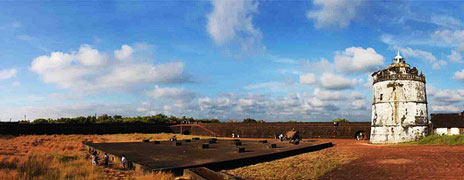Western India

India bristles with an eclectic mélange of ethnic groups; an intoxicating cultural cocktail for the traveller.
Dynamic Gujarat has a 1600km coastline and an easily traversable landscape. The sapphire of the salty isthmus is the ex-Portuguese island enclave of Diu, with its lazy, whitewashed vibe. At Shatrunjaya, climb to a mountain-top marvel of Jain architecture, or head off the map to Somnath and Dwarka, two powerful temples by the sea.The main city of Ahmedabad is home to Mahatma Gandhi’s ashram and the world’s finest textile museum. Gujarat is unique in its geological and topographical landscape. From volcanic outpourings through bedrock to fossil fields of indegenous dinosaurs; from the art of the neolithic cave painter to the stone masterpieces of a series of civilized architecture. Gujarat has it all. Ancient cave paintings to historic murals, natural and man made caves. Art, history, music, culture, all dovetail within each other to form a wondrous matrix that is the cultural exuberance of the people of the state.
Goa has a timeless charm. Its uniqueness lies in the fact that whilst creating a delicate synthesis of various cultures, it has retained its inherent soul. Goa, certainly is a land of dreams and romance...a timeless world of gentle hospitable people and unhurried activity. Swaying palms, white sands and sparkling water attract travelers from around the world to Goa’s balmy shores. Pep up your stay with a wander around a vanilla-scented spice plantation, stroll the bird-filled banks of the state's gentle rivers, poke around centuries-old cathedrals, and venture out to white-water waterfalls.
Sprawling Maharashtra, India’s second most populous state, stretches from the gorgeous greens of the little-known Konkan Coast right into the parched innards of India’s beating heart. Within this massive framework are all the sights, sounds, tastes, and experiences of India. Undoubtedly, Maharashtra’s greatest treasures are its extraordinary cave temples and monasteries. The busy Mumbai is the obvious base for visits to the Buddhist caves at Ajanta, with their fabulous and still-vibrant murals, and the monolithic temples of Ellora, where the astonishing Hindu Kailash temple was carved in its entirety from one single rock. Matheran Hill station, east of Mumbai , has a special attraction: a rickety miniature train that twists up the hill on a sinuous track. South of Matheran, a further series of magnificent rock-cut caves clustered around another resort town, Lonavala, provides the main incentive to break the journey to the modern, cosmopolitan city of Pune, famous for its Osho Ashram founded by the New Age Guru Bhagwan Rajneesh, but most appealing for its atmospheric old town and burgeoning eating and drinking scene that’s fast rivalling Mumbai.. By the time you reach Kolhapur, the main town in the far south of the state, famous for its temple and Raj-era Maharaja’s palace, Mumbai feels a world away. Mumbai, the city that never sleeps...Nowhere reinforces your sense of having arrived in Mumbai quite as emphatically as the Gateway of India, the city’s defining landmark. The Prince of Wales Museum the University and High Court, line up with the open maidans on one side, and the boulevards of Fort on the other. But for the fullest sense of dipping into Mumbai's colonial past visit the Chhatrapati Shivaji Terminus (CST), the high-water mark of India’s Raj architecture. Beyond CST lies the crowded Crawford Market and Mohammed Ali Road.